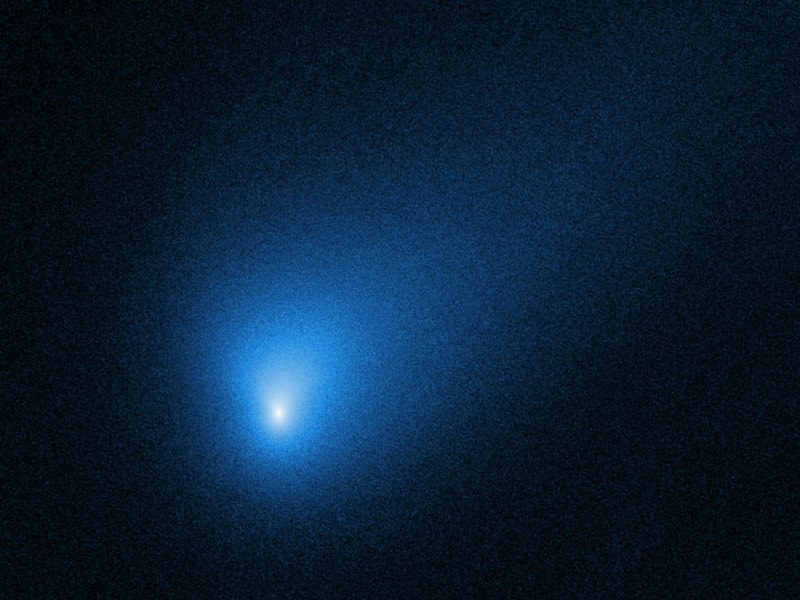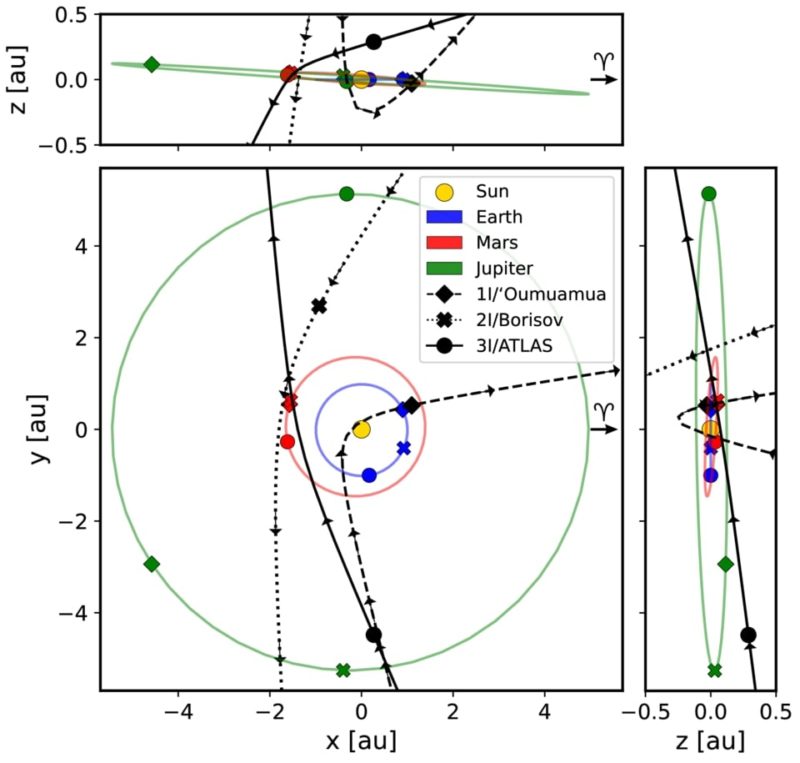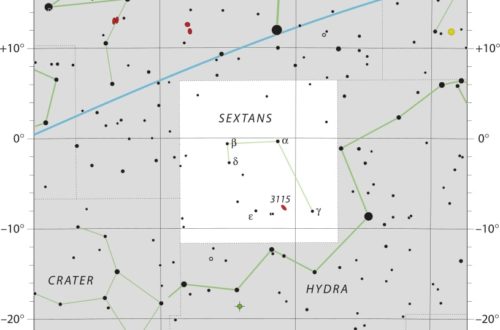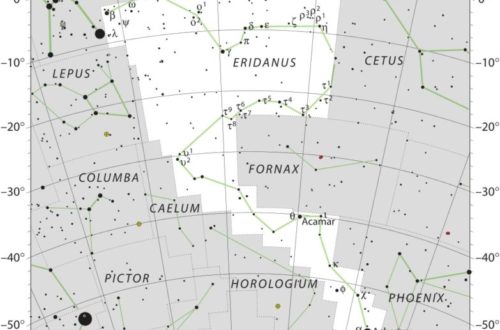Interstellar Comet 2I/Borisov: The First True Comet from the Stars

The second confirmed interstellar object and first interstellar comet, 2I/Borisov, bore pristine comet ices from another system. Its obviously hyperbolic orbit, with an eccentricity greater than three, established that it was not bound to the Sun, distinguishing it from local comets. Its flyby provides a benchmark for understanding how different star systems form and expel small objects.
Discovery of 2I/Borisov
Gennadiy Borisov, an amateur with a homemade 0.65‑m telescope in Crimea, discovered the body on August 30, 2019. The IAU named it 2I/Borisov after ‘Oumuamua’s 1I designation.
Its sighting triggered frantic international follow-up across radio, optical, and space-based telescopes. Early astrometry revealed a steeply hyperbolic trajectory arriving from Cassiopeia near the Perseus border, affirming a non-solar system origin and sparking time-critical campaigns prior to perihelion and a late December 2019 closest Earth approach at 1.9 astronomical units with a solar elongation of 80 degrees.
2I/Borisov Basic Characteristics
Big telescopes imaged a bright, compact nucleus area with a beautifully structured dust tail tens of thousands of kilometers long, as much as 14 times the size of Earth. The coma was carbon monoxide-rich with fine dust, casting a pure, near-featureless continuum in broadband images.
Brightness and tail morphology were generally comet-like, driven by CO activity at large heliocentric distance. Its jet-like features exhibited motion consistent with a 4.3-hour rotation period for the nucleus.
Its nucleus was tiny, only 0.4 to 0.5 kilometer across. That falls in the middle of the range for short-period and Oort Cloud comets.
Trajectory of 2I/Borisov
2I/Borisov, the first interstellar object observed, zipped through in a hyperbolic orbit with an eccentricity greater than three, unmistakably indicating it arrived from outside the Sun’s gravitational clutch and will never reappear.
Its perihelion was just beyond Mars’ orbit, allowing for high signal-to-noise imaging from large ground observatories and space assets. The window was short, just a couple of months around perihelion, so the observing teams focused on spectroscopy and dust-gas production rates. Its outbound leg, slightly bent by solar and planetary tides, suggests previous ejection by a giant planet in its birth system.
Origin
2I/Borisov probably coalesced in a frigid outer belt circling a cool star, like a red dwarf, in which freezing temperatures safeguard vulnerable ices.
Giant planets are good scatterers. Successive encounters increase orbital energy until one last kick overcomes the system’s escape velocity, sending bodies out into the void of interstellar space. 2I/Borisov’s trajectory fits that script.
Its chemistry, rich in CO and CO2 relative to H2O, fine dust grains, and mild thermal processing, fits formation at a great distance from its star, reminiscent of our own Oort Cloud.
Most likely originating in red dwarf systems with compact ice belts or binary systems where stellar perturbations increase ejection rates.

Path
2I/Borisov inbound came from interstellar space on a sharp slope to the ecliptic, reducing protracted planetary encounters but facilitating 3D orbital reconstruction. Precision astrometry confirmed that this rogue comet is unbound.
Tracing such trajectories hones source-region populations and ejection dynamics across planetary systems.
Speed
2I/Borisov’s positive v∞ and super-escape near-Earth speeds signify its origin as an interstellar comet. It reached maximum speed at perihelion at 43.9 km/s.
A Cosmic Messenger
Today 2I/Borisov, the second confirmed interstellar object and first interstellar comet, comes as a natural probe from a distant planetary system. Weeks of astrometric follow-up nailed down its hyperbolic trajectory and confirmed its origin outside the Sun’s pull, making what should have been routine comet tracking into an interstellar benchmark.
As a messenger, it bore chemical and physical signals from its natal disk. Spectroscopy revealed a continuum and color indexes approximate to Solar System long-period comets, indicating a broadly similar refractory mix and grain properties to typical Oort Cloud members. That likeness matters: it hints that volatile inventories and dust processing in distant protoplanetary disks can converge on familiar outcomes. It was not a clone however.
Dynamically, 2I/Borisov’s 44° inclination and 2 AU closest approach to the Sun limited major planetary perturbations, preserving a pristine laboratory. About a 4.3-hour rotation period, inferred from jet-like structures, constrained nucleus strength and activity torques. Together, these clues help to fine-tune models of comet formation in other stellar systems and migration histories. They assist in charting where planetary system architectures intersect and where they differ.
2I/Borisov’s speedy visitor only underscored the argument for fast-turnaround explorations. Interceptors, already in space and guided by early warning, could sample dust and volatiles, and image the nucleus pre-perihelion. The reward is immediate reality on building blocks created light-years distant.
Conclusion
2I/Borisov offered a fleeting yet profound glimpse into another planetary system. Its pristine ices and hyperbolic path revealed that the chemistry and physics shaping distant worlds may mirror our own—reminding us that interstellar wanderers carry the shared stories of many suns.
Wish more of these? Sign up for fresh sky discoveries, equipment advice, and how-to guides for your next evening under pristine dark skies.
Frequently Asked Questions
What is 2I/Borisov?
2I/Borisov, an interstellar comet discovered by Crimean amateur astronomer Gennady Borisov, was the second confirmed interstellar object to have entered our Solar System, traversing the inner Solar System from interstellar space in 2019 to 2020.
Why is 2I/Borisov scientifically important?
By studying the dust and gas from interstellar comet 2I/Borisov, researchers can compare the planetary building blocks between different star systems and even test models of how comets form.
How was 2I/Borisov discovered?
Discovered by Crimean amateur astronomer Gennadiy Borisov on 30 August 2019, this rogue comet exhibited a hyperbolic orbit, confirming its interstellar origin.
What was its trajectory through the Solar System?
It traveled along a hyperbola, marking it as a rogue comet not bound to the Sun. After swinging by the Sun and reaching perihelion in December 2019, it is now receding into interstellar space.
Would you like to receive similar articles by email?





